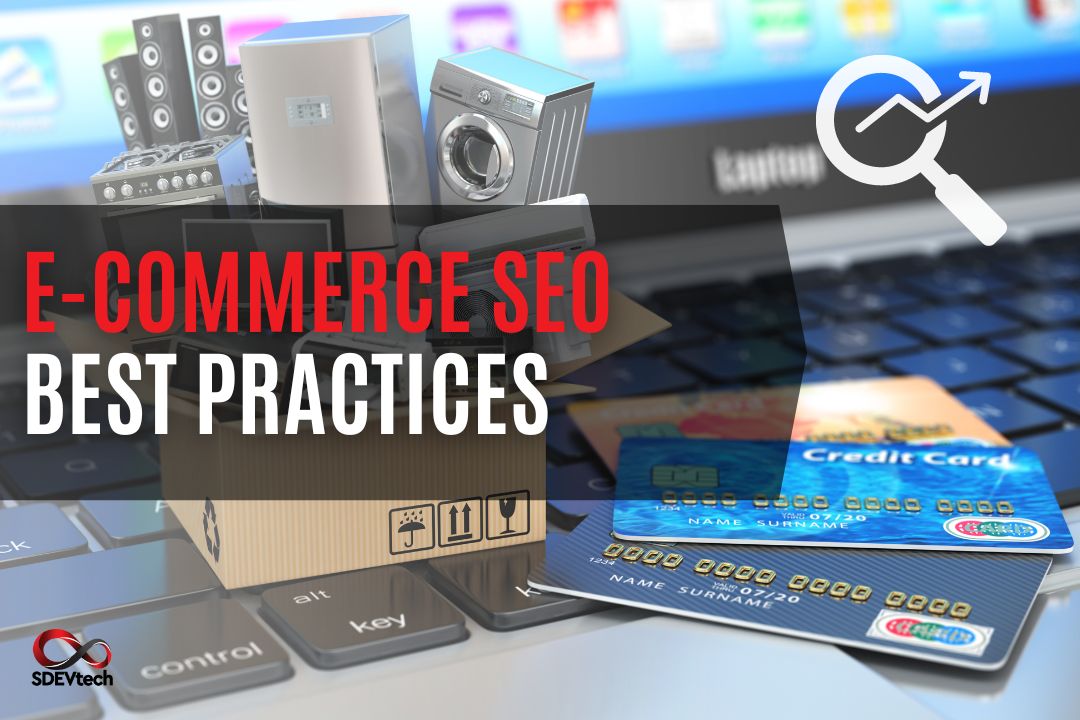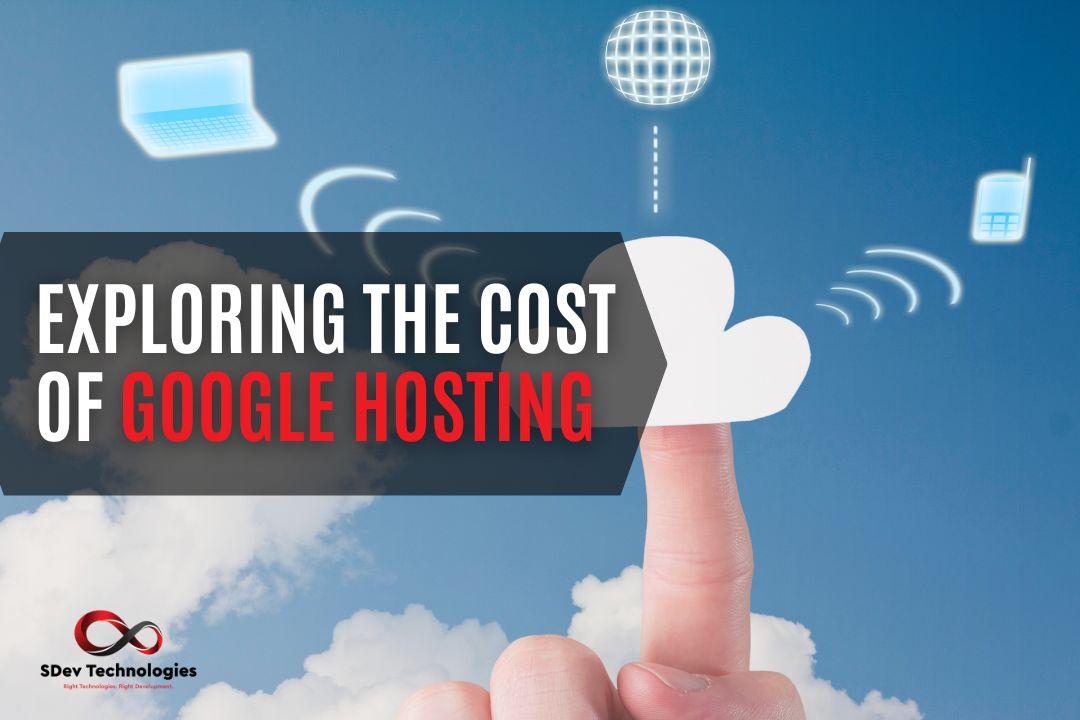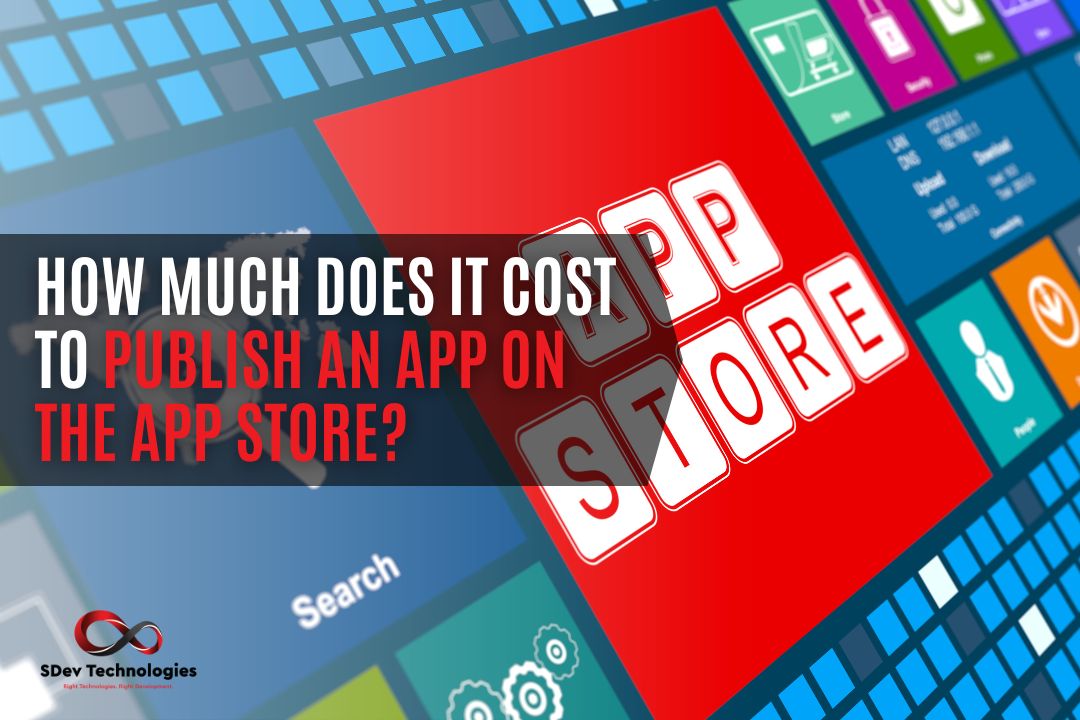Learn why mobile apps are crucial for business success in 2024. Learn how they boost customer engagement, streamline operations, and keep you competitive.
E-Commerce SEO Best Practices: 3 Proven Strategies to Increase Sales and Traffic
Discover essential e-commerce SEO strategies to elevate your online store’s performance. Learn how optimizing product pages, using schema markup, and improving site speed can significantly boost visibility, drive traffic, and increase sales.
Web Development Jobs in the Philippines: Emerging Trends, Growth and Opportunities
If you’re currently on the lookout for web development jobs, considering a career in web development, or seeking to expand your skills in this dynamic field, now is an excellent time to take the first step. With dedication, continuous learning, and a passion for innovation, you can carve out a successful and rewarding career in web development, contributing to the growth and evolution of the digital landscape in the Philippines and beyond.
Exploring the Cost of Google Hosting: A Comprehensive Guide
In today’s digital era, having a strong online presence is essential for businesses and individuals alike. One crucial aspect of establishing a successful website is choosing a reliable and cost-effective hosting provider. Google, known for its dominance in the digital landscape, offers a range of hosting services. In this blog post, we will delve into the topic of Google hosting costs, exploring the various options available and helping you make an informed decision for your website hosting needs. I. Understanding Google Hosting Services Google offers several hosting services that cater to different requirements and budgets. These services include Google Cloud Platform (GCP), Google App Engine, and Firebase. Let’s take a closer look at each of these options. A. Google Cloud Platform (GCP) Google Cloud Platform is a comprehensive cloud computing platform that provides a wide array of hosting solutions. With GCP, you can choose from various hosting options, such as virtual machines (VMs), managed Kubernetes clusters, and serverless computing. The pricing for GCP hosting is flexible and depends on factors such as resource usage, storage, and network traffic. B. Google App Engine Google App Engine is a Platform as a Service (PaaS) offering that allows you to host and scale web applications easily. It provides a fully managed environment, taking care of infrastructure management, so you can focus on developing your application. The pricing for Google App Engine is based on resource consumption, including instances, storage, and network usage. C. Firebase Hosting Firebase Hosting is a hosting service specifically designed for web applications and static websites. It provides a simple and scalable solution, making it an excellent choice for developers. Firebase Hosting pricing is based on the amount of data transferred and stored, along with additional features such as SSL certificates and CDN (Content Delivery Network) usage. II. Factors Influencing Google Hosting Costs When determining the cost of hosting with Google, several factors come into play. Understanding these factors will help you estimate and manage your hosting expenses effectively. Here are some key considerations: A. Resource Requirements The hosting resources you require, such as CPU, RAM, storage, and bandwidth, directly impact the cost. Higher resource requirements generally result in higher hosting costs. It is crucial to assess your website’s needs accurately to choose an appropriate hosting plan. B. Traffic and Bandwidth The volume of traffic your website receives and the amount of data transferred affect hosting costs. Google hosting services charge for bandwidth usage, so if your website experiences high traffic or serves large files, it can impact your overall hosting expenses. C. Additional Features and Services Google offers various additional features and services, such as domain registration, SSL certificates, and content delivery networks. These add-ons may come at an extra cost but can enhance your website’s performance and security. III. Comparing Google Hosting Costs with Other Providers While Google hosting services provide robust infrastructure and scalability, it’s essential to compare their costs with other hosting providers to make an informed decision. Several factors to consider when comparing costs include pricing models, support, uptime guarantees, and overall value for money. Conclusion In conclusion, Google offers a range of hosting services that cater to diverse website needs. From the flexible Google Cloud Platform to the convenient Firebase Hosting, Google provides options for various budgets and scalability requirements. When estimating the cost of hosting with Google, it’s crucial to consider factors like resource requirements, traffic, and additional features. Additionally, comparing Google’s hosting costs with other providers will help you make a well-rounded decision for your website hosting needs. With the right hosting solution in place, you can ensure a seamless online experience for your website visitors while maximizing your budget and resources. Remember, hosting is just one aspect of building a successful website, and it’s essential to optimize your At SDev Tech, we understand the significance of reliable and cost-effective hosting solutions for your website. We offer comprehensive hosting services that are tailored to meet your specific requirements. Our team of experts can guide you through the process of choosing the right hosting plan, whether it’s with Google hosting or other providers. We ensure that your website receives optimal performance, security, and scalability, allowing you to focus on your core business goals. Contact us today to explore how we can assist you in achieving a robust online presence with our top-notch hosting services.
What Is IT Staff Augmentation?
In an era of rapid technological change, companies often require particular abilities to stay competitive. IT staff augmentation, a common form of outsourcing, provides a flexible and cost-effective way for businesses to meet and scale to these demands. Understanding IT Staff Augmentation IT staff augmentation is a business strategy in which companies hire outside experts to help their own IT teams, usually via a third-party staffing agency. This model is different from traditional hiring because it focuses on short-term and project-based needs, letting the in-house team focus on more meaningful or important work. The development of new technologies has highlighted the growing demand for IT staff augmentation. Important factors also include the rise of remote work, which has increased the number of qualified people, and the need to quickly expand or contract IT teams based on project needs. IT staff augmentation has worked quite well in many fields. For instance, tech startups, especially fintech, were to grow their development teams to meet the needs of launching new products. They have done this by hiring extra people to do specialized tasks like data analytics and cybersecurity. What Is IT Staff Augmentation Good For? Augmenting your existing IT talent can offer significant advantages, including: You can quickly change team sizes to meet changing project needs without the long-term commitments that come with traditional hiring. This is key to filling crucial gaps in human capital, especially in a market strapped for talent. It’s cost-effective, so businesses can save on expenses associated with permanent employment like benefits, training, and physical workspace. One of the best things about outsourcing is that you can manage extra staff directly as if they were your own employees without incurring sky-high costs. A network larger than your own may help you find the IT professionals you need. A dedicated team whose only job is to source the best talent can help you quickly fill open positions. IT staff augmentation firms often have pre-vetted candidates, accelerating the hiring process and allowing companies to stay agile and avoid the pain points associated with hiring and onboarding. Technical Aspects of IT Staff Augmentation When your business is considering augmenting your IT staff, it’s important to know what you need, especially on the technical side. For example, companies often need people with specific technical skills and levels of experience. For some businesses, hiring experts who know certain programming languages or are up-to-date on new technologies like AI and blockchain may be necessary. Still others may prioritize those who are adept at using project management tools like Jira, Trello, or Asana are also necessary for keeping track of tasks and fostering a sense of commitment and collaboration. Finally, communication is a cornerstone of the success of staff augmentation. Using communication tools like Slack and Microsoft Teams makes it easy for internal and augmented teams to work together, which leads to a more productive workplace. Industry-Specific Considerations Each industry comes with its own unique set of requirements for IT staff augmentation. For example, the financial sector emphasizes security and compliance due to the sensitive nature of financial data. External data scientists or machine learning engineers can be contracted to craft predictive models for risk assessment and fraud detection. At the same time, temporary full-stack developers are also instrumental in creating secure mobile banking applications. Likewise, the healthcare industry requires experience with healthcare regulations and patient data protection. For example, temporary DevOps engineers can manage medical data systems, implement CI/CD pipelines to maintain healthcare software, and ensure patient data security. They can also work on telemedicine platforms to broaden the reach of healthcare services and enable remote consultation. E-commerce, on the other hand, demands skills in user experience (UX) design and the ability to create scalable infrastructure, which is crucial for handling the dynamic nature of online retail. Implementing IT Staff Augmentation Implementing IT staff augmentation involves a number of important steps. The first step is a thorough assessment of their needs. Businesses must carefully look over their project needs and figure out what they’re lacking and the type of skills they require. Second, companies need to pick staffing firms with a good track record and experience in the right industry when they are looking for a vendor. Regardless of the implementation approach, businesses should take care to integrate external staff with their internal team in a thoughtful manner. It’s important to remember that human capital isn’t just numbers on the board, and intangible assets like morale, teamwork, and chemistry are just as essential as the talents they bring to the table. Future Trends in IT Staff Augmentation Looking ahead, a number of significant trends are likely to shape the landscape of IT staff augmentation. Some research suggests that companies will increasingly turn to staff augmentation for access to specialized expertise in areas like emerging technologies and data science. This trend reflects the growing complexity of projects and the need for niche skills that may not be available in-house. For example, companies that want to keep the agility present during their startup era may turn to outsourcing skilled workers for AI, IoT, and cloud computing. This coincides with remote work becoming more and more viable worldwide, broadening the talent pool and enabling companies to source the best talent globally. IT staff augmentation also figures in the future, where it’s becoming clear that work is going to be project-based, i.e., specific projects or initiatives. This approach allows for more flexibility for both the contractor and the employer, particularly beneficial for industries with fast-paced changes and project-specific requirements, such as IT and software development. Finally, there’s a growing recognition of the importance of soft skills such as adaptability, communication, and problem-solving, along with technical expertise. The Final Word: IT Staff Augmentation IT staff augmentation can be a cost-effective, flexible, and specialized way to add IT resources to your team. By carefully considering your IT needs, choosing a reputable IT staff augmentation company, and having a clear agreement in place, you can ensure that you get the most
What Are 3 Types of Web Development?
Web development is a complicated process, and it’s bound to become even more complex as the internet evolves. Therefore, each project can involve multiple developers with unique skills and different responsibilities. What Are the 3 Types of Web Development? Front-end, back-end, and full-stack are the three types of web development. Understand what makes each one different. Front-End Development Front-end development is all about the visual aspect of your site. Front-end web developers are well-versed in user interface and user experience. They work in tandem with web designers to improve the look and feel of your website, but they concentrate on the functional elements only. Front-end developers create and test pages using various programming languages. They also design graphic user interfaces, build 3D effects and animations, and ensure pages are responsive to different screen sizes. These professionals keep up with the latest web development and design trends and adopt concepts they see fit to optimize your site for users and search engines. They’re in charge of testing and evaluating the usability of your website, too. Back-End Development Back-end development pertains to your site’s database — the stuff visitors don’t see. System architecture development is within the purview of back-end web developers. They write and maintain server-side code to support data storage and user authentication, ensuring your site can handle requests properly. These professionals are adept at using a wide range of programming languages and are constantly on the lookout for innovative technologies and techniques to code better. Full-Stack Development Full-stack development refers to the entire front-end and back-end development pipeline. Full-stack web developers can specialize in either the front-end or back-end aspect of the project, but they’re capable enough to oversee everything from start to finish. What Are 3 Types of Web Development Skills? The three most important web development skills are programming ability, attention to detail, and creative thinking. Front-end, back-end, and full-stack developers must be familiar with multiple tools and seek continuous learning to pick new coding practices from the community. Writing, testing, and fixing code leaves no room for error. All breeds of self-respecting web developers are meticulous enough to spot and eliminate vulnerabilities cyber criminals can exploit. As technical as it is, web development is an art. The most sought-after developers are excellent at pushing the envelope and exploring new possibilities to achieve stellar user experience, robust security, strong search engine optimization, and other relevant factors in building your site. What Are the Big 3 of Web Development? HyperText Markup Language (HTML), Cascading Style Sheets (CSS), and JavaScript are the big three of web development. If your website was a human body, HTML would be the skeleton, CSS would be the skin, and JavaScript would be the muscle. Do Front-End Developers Need to Know Web Design? Front-end developers need no web design skills to perform their jobs properly. Conversely, web designers must understand HTML, CSS, and JavaScript at the fundamental level. Need to Develop Your Site? Leave web development to SDev Technologies. Our best-in-class developers have the skills and experience to handle your project from beginning to end, ensuring your site reflects your business aspirations and represents your brand to your target audience to the highest level. Contact us today to talk about your web development and design needs, discover what we bring to the table, and receive a quote! Read more on DesignRush
What Are the Basic Principles of Web Design?
Web design is an art, which is why sites look different from each other. However, it’s also a science. That’s why the most successful ones share qualities based on universal truths all self-respecting designers understand. What Are the Basic Principles of Web Design? The basic principles of web design are clear purpose, lucid content, painless navigability, fast loading time, unfailing screen responsiveness, and test-based layout. Learn more about these six fundamentals. Site Purpose Must Be Clear All websites want to drive traffic, generate leads, and make money by selling something directly or indirectly. Despite these common objectives, those with good design leave no room for ambiguity in their being. Their pages — whether they describe a product or a service, educate about a particular subject, or entertain through interesting stories — set the expectations of readers. Sites with bad design, on the other hand, have an identity crisis. They can have incoherent visual elements, inconsistent messaging, and missing or inappropriate calls to action. Content Must Be Lucid Wise site owners know that internet users want the path of least resistance to get the information they need. That’s why they publish copy whose readability matches the expertise level of its intended audience. Understanding that most of their visitors initially scan what they look for, site owners favor content pieces broken by headers with bold words and phrases instead of large chunks of plain text. They embrace white space and accent colors to assist readability. Everything Must Be Navigable Properly designed sites ensure all information is discoverable and findable easily. They have well-thought-out sections categorizing relevant pages and masterful interlinking tying complementary content pieces together. Moreover, the best websites act as little Googles. If you plan to maintain a business blog and a knowledge base for tutorials, frequently asked questions, etc., your site must have a robust search feature that can return logical results for queries. Pages Must Load Fast Good web design emphasizes speedy loading times. The web has abundant information, so internet users are rightfully impatient. They’ll give your site a chance as long as it takes less than two seconds to load and be accessible. Fast loading speed can positively impact your site’s reputation, too. It indicates that you maintain your site and value user experience. Design Must Be Responsive Speaking of user experience, good web design is synonymous with mobile responsiveness. If you want to increase your site’s stickiness and send your message across, make sure its pages can adapt to any screen and browser window size. Layout Must Be Data-Based Falling in love with your page layouts even if they’re unpopular among your visitors is bad practice. Web design is about them, not you, so test the effectiveness of your pages early and often and polish them along the way until you craft their best versions. Have a Fundamentally Sound Site SDev Technologies takes pride in bringing countless stunning websites to life. Get in touch with us today to talk about your vision for your site, learn about our past projects, and get a quote!
How Much Should I Pay for App Development?
App development projects can be expensive. It’s all too easy to spend more than what your budget permits if you go about yours with little strategy. Get your frequently asked questions about app development costs to reduce your expenses and make the most out of your money. How Much Should I Pay for App Development? The amount you should pay for app development depends on many factors. The app technology you choose, your project’s complexity, where you want to publish your app, the experience and size of the team you hire, and where you want to source your talents are major determiners of your cost. The expertise and tools needed to develop native vs hybrid vs cross-platform vs progressive web apps are different and can affect your total bill. The same goes with your mobile app’s feature set extensiveness. You may also need to budget for infrastructure and system integrations. Catering to iPhone and iPad owners may cost you more than targeting Android users, too. How Much Does the Average App Design Cost? In the United States, the average app design cost can range from $40,000 to $100,000. If you want to stay near the lower end of this estimate, you’ll need to limit your mobile application’s functionality to core features — such as navigation and forms. Aspiring for more sophisticated hardware integrations, like an augmented reality social media filter, will drive up your expenses. How Much Does an App Developer Cost Per Hour? An app developer costs around $50 per hour in the developed world. An experienced talent may want more money but can guarantee quality work, whereas a beginner may accept less with no assurance of excellence. Moreover, region dictates the hourly rate of an app developer. Wages in the US, the UK, and Australia are the most expensive. Those in the Western and Eastern Europe are lower, but the salaries of developers in Southeast Asia are the most competitive. Logic dictates you should hire where labor is cheapest to get more bang for your buck. You’ll get more than what you pay for because Southeast Asian mobile app developers are just as proficient as their Western peers. An app development team is more than just developers, though. A typical one also includes a user interface or user experience designer, a quality assurance specialist, and a project manager. How Long Does It Take to Develop an App? The average app takes four to six months to develop. A project with simpler requirements may take less time to finish, but a demand one can last nine months or more. Ultimately, your chosen features determine how many development hours the team needs to spend to ready your mobile app for publication. For example, login will add 15 to 20 hours of work. Hardware integrations like camera, Bluetooth and geofencing need a build time of anywhere between 20 and 40 hours. Why Is App Development So Expensive? App development is so expensive because of the wide skills gap. The world has yet to produce enough software developers to fill the number of tech roles across different industries, resulting in an imbalance between supply and demand. Despite this, app development can be economical. App builders let you create your own in exchange for a subscription fee of tens or more than a hundred dollars per month. The problem with them is that they only churn out cookie-cutter designs with minimal functionality. You can hire freelance developers to build your mobile app from scratch, but they’re less efficient and will unlikely deliver on schedule. Your safest bet is a credentialed app development agency in Southeast Asia that can assign a dedicated team to your project. Let a Filipino Team Handle Your Project SDev Technologies is a member of the Philippine Software Industry Association. We specialize in native, hybrid, cross-platform, and progressive web app development. Regardless of your budget, you’ll find our rate affordable and bring down your total cost to roughly $2,700 to $27,000. Contact us today to discuss your vision for your app and we’ll give you a quote!
How Much Does It Cost to Publish an App on the App Store?
Publishing mobile applications on the App Store and other marketplaces can be confusing because of different rules and pricing models. Familiarize yourself with how much Apple, Google, Amazon, Samsung, and Huawei charge to set your expectations accordingly. How Much Does It Cost to Publish an App on the App Store? It costs $99 to $299 per year to publish an app on the App Store. The amount you have to pay depends on whether you sign up for the Apple Developer Program or the Apple Developer Enterprise Program. Choose the former if you want your app to be available for everybody, whereas go with the latter if you want to restrict distribution to your employees. Regarding App Store fees, Apple wants a 30% slice of iOS and iPadOS app subscription fees, which dips to 15% after a year. In addition, the company takes 30% of your proceeds from in-app purchases of digital goods and services only. Apple offers a Small Business Program to businesses that make no more than $1 million a year. If you qualify, your paid app and in-app purchase commission will be 15%. How Much Is the Google App Developer Fee? The one-time Google App developer fee is $25. Once you create your Google Play Developer Account and publish your mobile app, the tech giant takes a cut of 15% for the first $1 million you make from premium subscriptions and in-app purchases every year. The Alphabet company charges 30% of all earnings on top of that. Moreover, Google collects 15% of subscription renewal earnings regardless of how much you’ve made in the calendar year. You may also lower your service fee for other transactions on Google Play if you’re eligible for the Play Media Experience Program. How Much Does It Cost to Publish an App to the Windows Store? It costs $19 to $99 to publish an app on the Microsoft Store. Your registration fee depends on whether you open an individual or company account. In many cases, Microsoft may charge you in your local currency if you’re outside the United States. The company’s revenue share is 85/15 for non-gaming apps and 88/12 for games. If you use your own or a third-party payment system in your non-gaming app, you’ll keep 100% of your revenue. How Much Does an Amazon Appstore Developer Cost? It costs $0 to be an Amazon Appstore developer. If you qualify for the Amazon Appstore Small Business Accelerator Program, you can keep 80% of what you make from the platform — instead of the standard 70% — if your annual revenue is less than $1 million. Plus, you’ll receive Amazon Web Services credits worth 10% of your app earnings on Amazon devices. How Much Does It Cost to Publish an App on Samsung Galaxy Store? It costs nothing to publish an app on Samsung Galaxy Store. The revenue you generate from this app marketplace is subject to a 30% commission. Is Being Huawei Developer Free? Being a Huawei developer can be free. You can avoid Huawei AppGallery service fees outside mainland China as an individual or enterprise developer using your free quota or your monthly $300 voucher, respectively. Minimize Your Costs With SDev Navigating the fluctuating fees across various app distribution platforms can be tricky. Fortunately, SDev Technologies can help you develop and publish mobile apps for the least amount of money. Book your consultation today to discuss your app development project and get a quote!
Cyber Compliance 101: Is It Necessary to Take a VAPT?
Short for vulnerability assessment and penetration testing, VAPT is a way to proactively spot your app’s weaknesses. The goal is to unearth its undiscovered flaws before hackers do. It costs money, but it can be a good investment to avoid major financial losses linked to cyber attacks. Getting your application scanned has a long list of merits, but is it mandatory? Today, we’ll definitively answer this frequently asked question to help you decide whether you should budget for it. Is It Necessary to Take a VAPT? Yes, it is necessary to take a VAPT for compliance purposes. Some companies can afford to meet industry standards without dealing with this expense. But you must get your app regularly checked if you have to abide by the following: General Data Protection Regulation (GDPR) The GDPR exists to protect the personal data of citizens of the European Union (EU).The United Kingdom is no longer its member, but the country’s Data Protection Act of 2018 has enacted the regulation’s cybersecurity requirements. So in a way, the GDPR still safeguards the Brits even after Brexit. Say your business operates outside of the EU and the UK, do you still have to worry about this regulation? Yes, you may still have to if you allow users in Europe, England, Wales, Scotland, and Northern Ireland to download your app. As a data processor and/or controller, you must observe this piece of legislation, or else you may lose access to the European and British markets. Payment Card Industry Data Security Standard (PCI DSS) The PCI DSS spells out the minimum technical and organizational requirements for handling the data of cardholders safely and keeping fraudsters at bay. If you want to accept and process payments via credit card that bears the Visa, Mastercard, Discover, American Express, or JCB logo, you should make every effort to comply with the PCI DSS. Otherwise, you may get fined and erode your credibility as a business. ISO (International Organization for Standardization) 27001 Attaining the ISO 27001 certification makes it painless to comply with dozens of legal requirements regarding information security across the world.Going hand in hand with an information security management system, this international standard teaches you how to dramatically reduce sensitive data leakage by granting only authorized parties the right to access and/or change certain information. Health Insurance Portability and Accountability Act (HIPAA) If you run a medical facility, a health insurance firm, or a clearinghouse in the United States, you’ll have to play by the rules defined by the HIPAA. Signed in 1996 by President Bill Clinton, it’s the most stringent American law for digital medical information security.Due to the rising number of ransomware incidents involving healthcare organizations, HIPAA compliance is more important than ever. Go With SDev Tech to Be and Stay Compliant VAPT may not be mandatory, but it’s necessary to embrace it to avoid noncompliance with important laws, regulations, and international standards you should observe. To learn exactly how we, at SDev, can put you in a position to satisfy all of the legal requirements your app must meet, book a consultation today!












